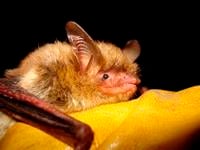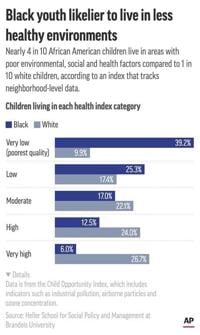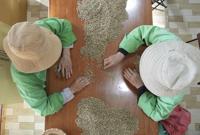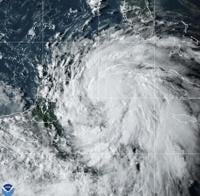TRAVERSE CITY, Mich. (AP) — The Biden administration is temporarily delaying stepped-up legal protections for two imperiled species following efforts by congressional Republicans to derail the actions.
The U.S. Fish and Wildlife Service said Wednesday it was postponing from “threatened” to the more severe “endangered” category until March 31. The change had been scheduled to take effect Jan. 30.
On Tuesday, the service announced that new scheduled to take effect then had been bumped to March 27. The agency is granting endangered status to the grassland bird's southern population segment while listing the northern segment as threatened.
The administration said the delays were intended to give regulators and those affected by the changes — such as landowners, loggers, ranchers and wind turbine operators — time to adjust.
“This is basically a chance for us to get our guidance and tools ready for when the listing goes into effect,” agency spokesperson Georgia Parham said, referring to the decision on the northern long-eared bat.
In a separate statement on the lesser prairie chicken, the service said the 60-day grace period would provide a window for establishing grazing management plans and voluntary habitat protection measures.
“We are committed to working proactively with stakeholders to conserve and recover lesser prairie chickens while reducing impacts to landowners, where possible and practicable,” the service said.
The listings, both announced in November, drew pushback from GOP lawmakers who complained that stronger protections would disrupt infrastructure projects and other economic activity.
“While a delay gives industry stakeholders valuable time to prepare for more bureaucratic red tape, our preference continues to be that this listing of the lesser prairie chicken be dropped," said Sen. Roger Marshall of Kansas. He was among senators who wrote to Interior Secretary Deb Haaland this month requesting an extension.
Two dozen House members, led by Arkansas Republican Bruce Westerman, wrote a letter to congressional leaders in December pushing unsuccessfully to block federal funding for reclassifying the bat.
The Center for Biological Diversity, an environmental group, accused the Fish and Wildlife Service of setting a dangerous precedent by holding off on the new designations.
“It's a red flag that they could continue denying the protections,” said Tierra Curry, a senior scientist with the center.
“This is happening behind closed doors, there's not enough time for us to challenge it legally and they're just caving to Republican pressure that's driven by industry."
The northern long-eared bat has been driven to the brink of extinction — primarily by white-nose syndrome, a fungal disease. Declines are estimated at 97% or higher among affected populations. The bats are found in 37 eastern and north-central states, plus Washington, D.C., and much of Canada.
The disease causes the bats to wake early from hibernation and to sometimes fly outside. They can burn up winter fat stores and eventually starve.
In many cases, the service identifies “critical habitat” areas considered particularly important for survival of an endangered species. Officials decided against doing so for the northern long-eared bat because habitat loss isn’t the primary reason for its slump.
Still, the agency plans recovery efforts focused on wooded areas where the bats roost in summer, nestling beneath bark or in tree cavities and crevices.
Under the Endangered Species Act, federal agencies are required to consult with the Fish and Wildlife Service to be sure projects that they fund or authorize — such as timber harvests, prescribed fires and highway construction — will not jeopardize a listed species’ existence.
Westerman and the other Republicans complained that efforts to protect the bat could impose “significant restrictions” on logging, which they said actually can help the bats by increasing roosting and foraging areas. Oil and gas development, mining and other industries also could be hampered, they said.
Parham said the service is crafting instructions to help regulators, landowners and business interests determine more easily how protecting bats' summer habitat might affect individual projects.
The service said it also is developing “conservation tools and guidance documents” involving the lesser prairie chicken for landowners and business interests as well as other government agencies.
The lesser prairie chicken's range covers a portion of the oil-rich Permian Basin along the New Mexico-Texas state line and extends into parts of Colorado, Oklahoma and Kansas. The habitat of the bird, a type of grouse, has diminished across about 90% of its historical range, officials say.
The crow-size, terrestrial birds are known for spring courtship rituals that include flamboyant dances by the males as they make a cacophony of clucking, cackling and booming sounds.
Environmentalists consider the species severely at risk due to oil and gas development, livestock grazing, farming and construction of roads and power lines.
___
Follow John Flesher on Twitter: @JohnFlesher
___
Associated Press climate and environmental coverage receives support from several private foundations. See more about AP’s climate initiative . The AP is solely responsible for all content.








































